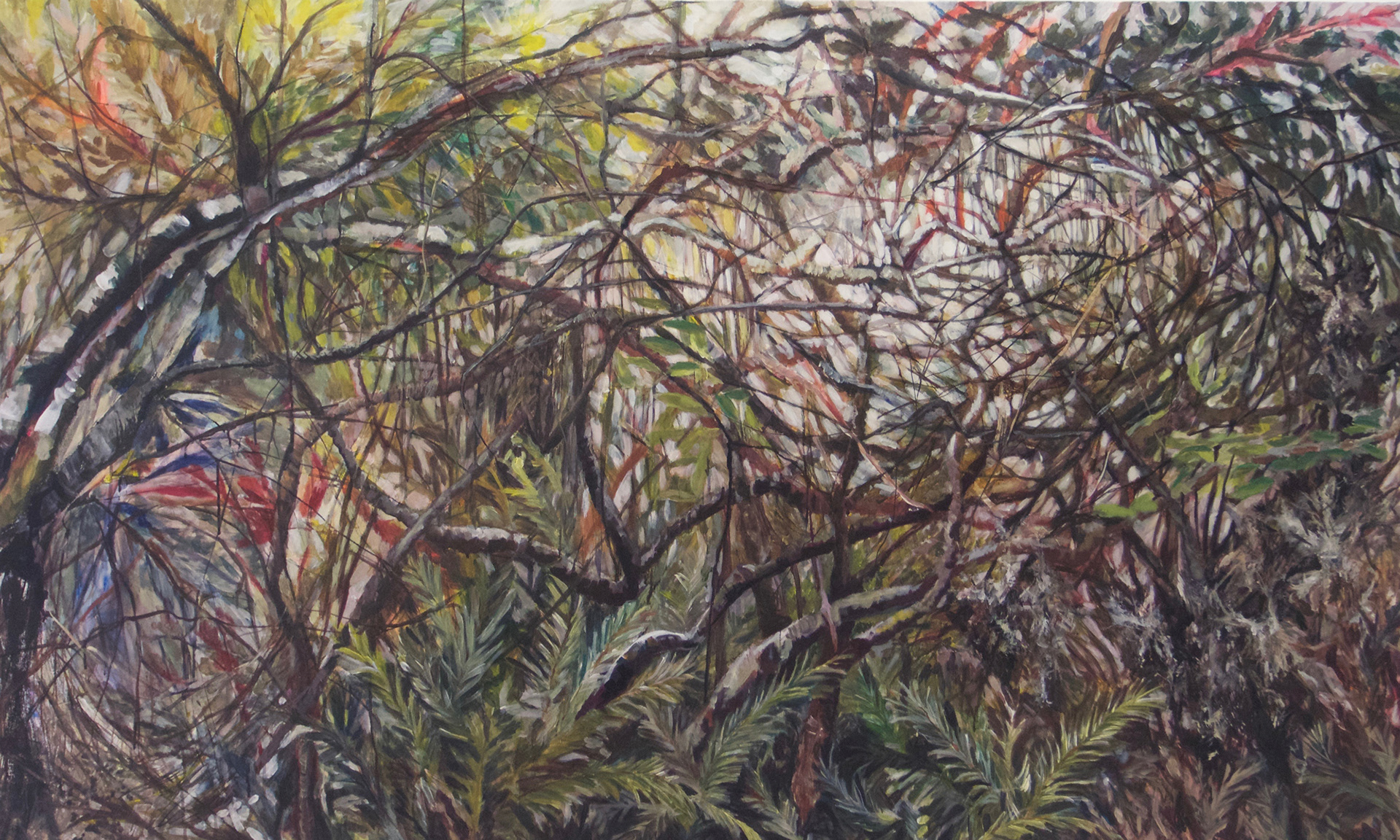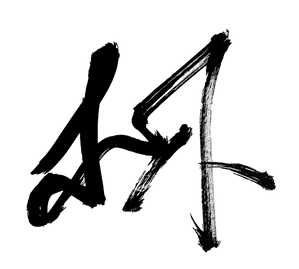The Forgotten Bush (2016) on loose canvas 2800x1800mm
(be)longing is my first series of works, my acknowledgment of nature, a bush I used to play with as a child. It was my first connection and relationship with nature as a human. I felt a wistful longing for the bushes that used to belong to me.
It was a farm with thick bushes and no houses nearby. Naturally, the jungle was my playground. As time went by, I witnessed the destruction of the environment unconsciously. Subconsciously, the loss of the bushes has stayed with me since then. I remember the jungle as a paradise, companion, and restful place. After years of living in New Zealand, constant mourning drives my desperation to recreate the bush; it is a way of visualising the lost bush. I see the bush appear in my memory.
At the initial stage, I wasn't sure how to address my personal emotions in a constructive way and putting it as academic research would sound ridiculous. I guess this is the beauty of art. I started by focusing on the body of the works, how to form complexity, chaos, and destruction of the bushes. My interpretation of brushes is that they are not “pretty" objects and are somewhat messy and calm. I wanted the bush appears as it is.
The vegetation in the brushes of Malaysia and New Zealand is an entirely different world. Still, there is one thing it will never change, the feeling of “transient convergence” As Jon Anderson (2009, p123) described “a temporary coming together of many ‘things’, an ongoing assemblage of entities/process.” I consider a transient convergence allowing humans to comprehend and appreciate nature from that moment. This inner feeling registers in our memory. It is a way to emerge the post-nature human society. To achieve the transient convergence atmosphere from a painting, the body of work needs to give instant tranquillity and convey the emotion from my memory. The scale has played an essential key in portraying the almost actual size of the bushes. My two big painting size is about 2.9m long x 1.7m wide, and the third one is approximately 3.1m x 2m
I tried to use less harmful materials to produce my work. I decided to use an eyelet to hang my work instead of the wood panel to hold it, which was my initial choice. This method not only lowers the cost of transportation but also uses less timber material. I paint my work with sticks, clothe, bird feather, and leaves. These materials not only give the body works rich in texture and marks but are incredibly significant to serve as painting tools, especially the bird feather, which has strength and softness, I use what I’ve, like turkey, chicken and seagull feathers. I replace black and gesso with black ink, and gesso replaces white with another colour in acyclic in minimum containing metal. The black gives the perfect black and light to draw any thin, robust lines. Gesso is not only able to pull the paint back to raw, and the volume can be relatively thin by diluting with glazing and water.
My research process involves photo-taking, drawing, literature review of artists' works, and observation in bushes, mainly in the North East Valley area at this stage. Branches' characteristics are the key to capturing the impressions in my painting, where drawing contributes to my study of shape and movement.
We are very lucky in New Zealand, still able to enjoy nature. However, research has shown that New Zealand was covered in 80% of dense forest before people arrived. Severe destruction of landscape happened in New Zealand as early as the eighteenth century. New Zealand artist Alfred Sharpe painted “A Golden Eve, Waiheke Island” in 1890 and Eric Lee Johnson's “Stump “in 1972; they presented obvious evidence in their painting about deforestation in New Zealand in that era. What happened to my lost bushes in Malaysia is happening here. I can hear a yearning for hope from brushes.
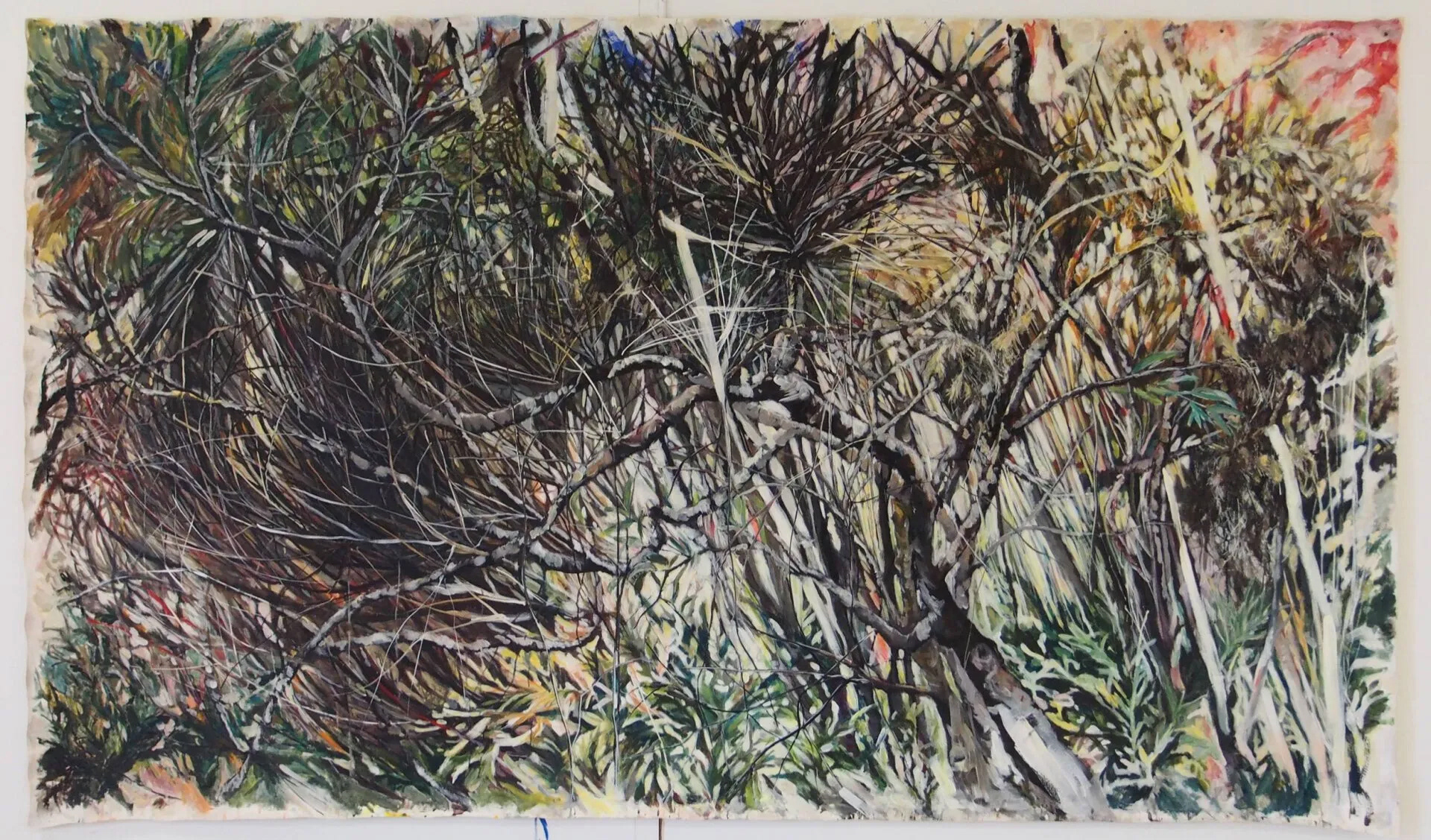
Juggle that we passed by Syria (2016) on loose canvas 2800x1800mm
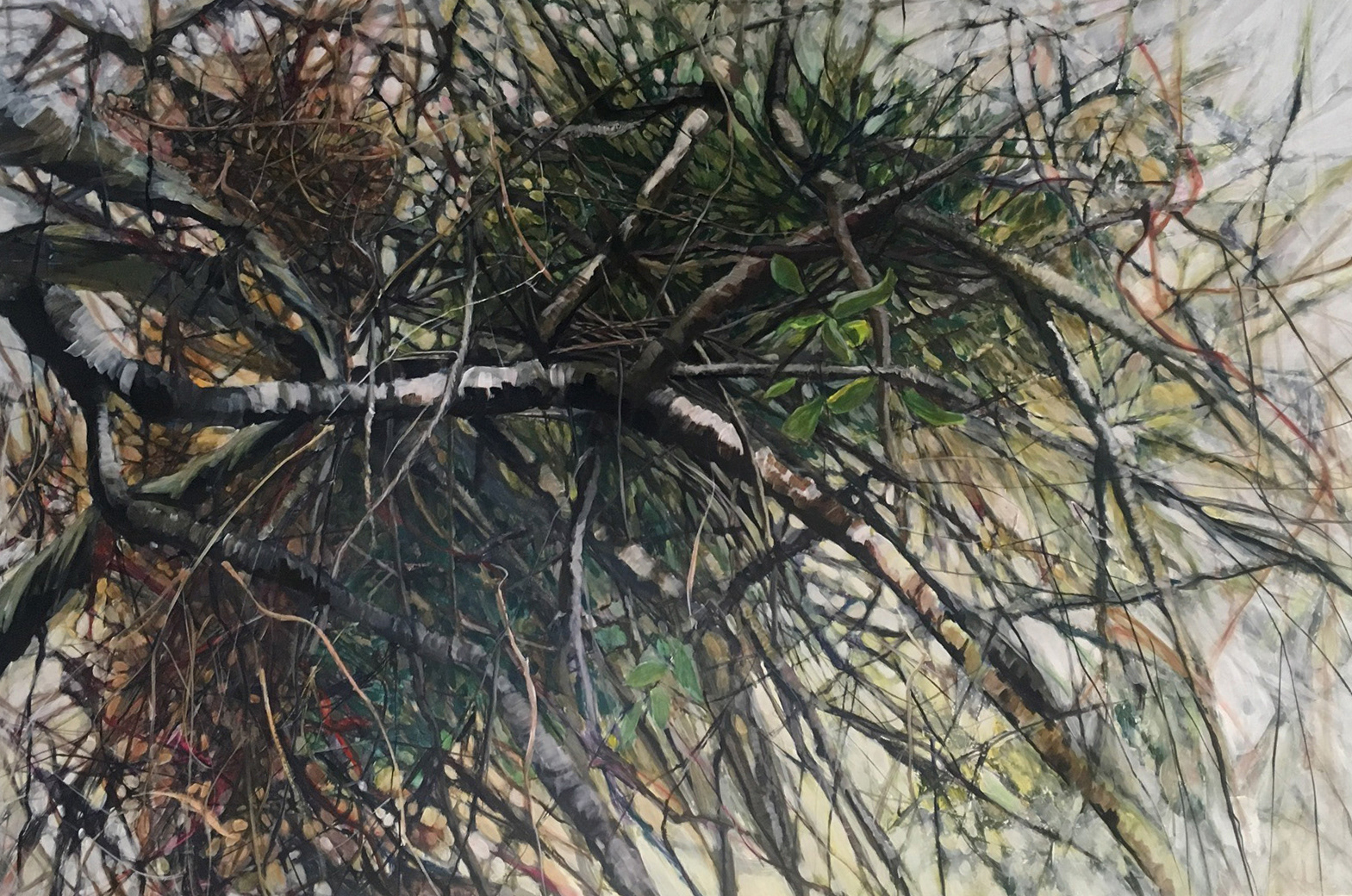
Home
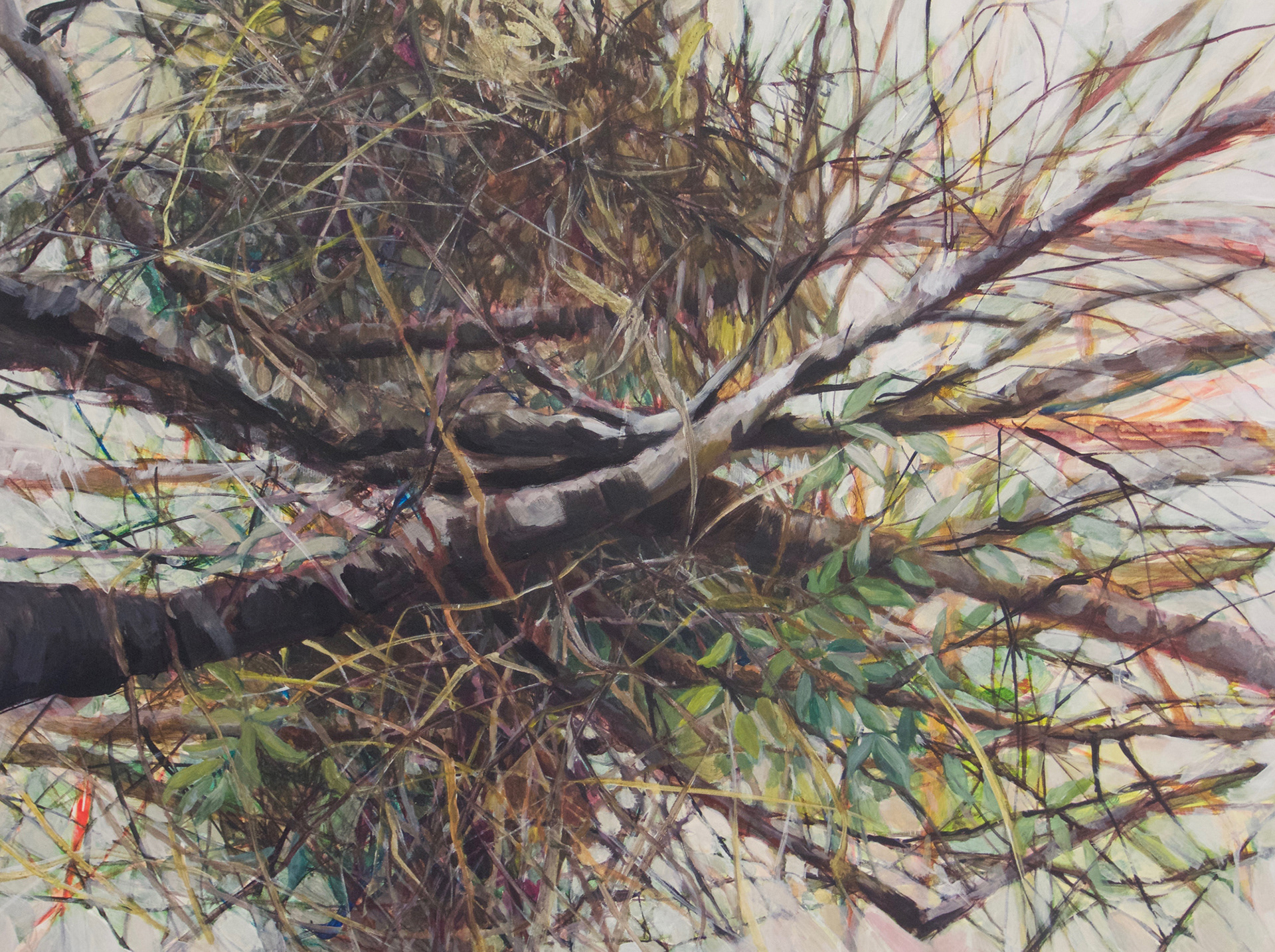
Relationship - SOLD
